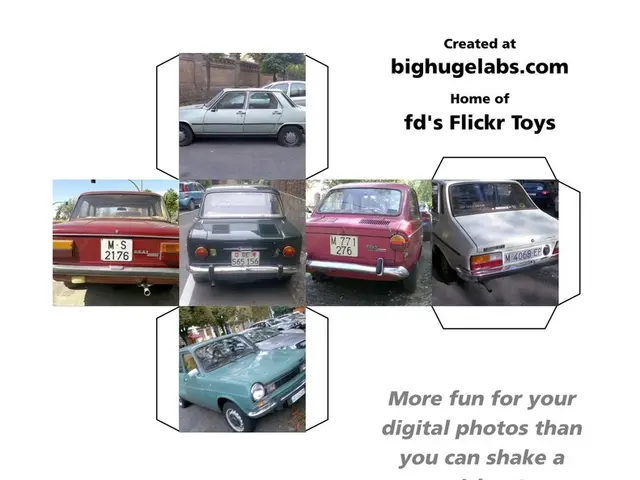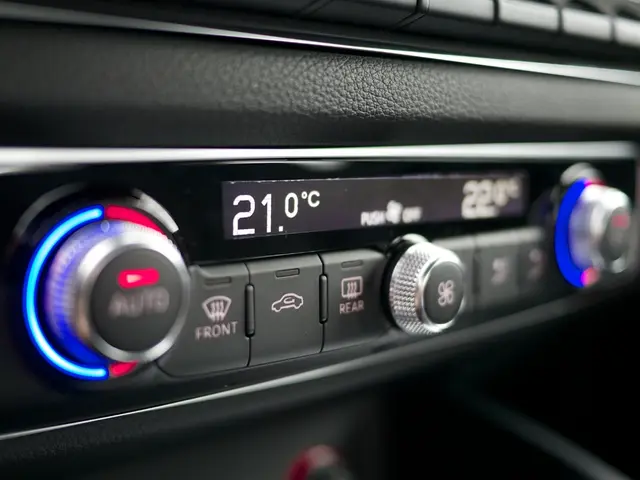Glowingly Quick EV Charging: Breaking the Speed Limit
Advancements in infrastructure technologies for electric vehicles are progressing rapidly.
Time is of the essence when you're on the go, and that's exactly why electric vehicles (EVs) are upgrading their charging systems to keep up. With a growing number of 59,600 EVs on Russia's roads (as of the start of 2025), the need for speedier charging solutions has become a top priority. Here's a sneak peek into the world of mega-watt chargers, an upcoming game-changer for the EV industry.
Power players: The rise of the 800 kW titansThese high-energy charging stations can supercharge your EV in mere minutes, making "refueling" as swift as grabbing a cup of Joe. Such rapid speeds are possible thanks to newly engineered batteries that are well-equipped to handle high currents and heat, as showcased by BYD's 1000 kW charging system that can power a vehicle for up to 400 km within just five minutes. Tesla's Supercharger V4, boasting a power of 350 kW, can charge the Model S or Model X to 80% in an astounding 15 minutes – a noticeable upgrade from previous versions.
But behind these impressive numbers lies a complex web of engineering realities. Implementing such beastly chargers necessitates a significant overhaul of the power grid, requiring reinforcements, new substations, and enhanced electricity stability.
Off-the-grid convenience: Wireless charging on the riseJust imagine needing to lift a finger, or even better, no fingers at all, to charge your EV. Welcome to the era of wireless charging, a technology that operates on the principle of inductive energy transfer. By setting up coils under parking spots and electrically enabling magnetic fields, vehicles simply need to be within the system's reach to be charged. A US demonstration by Oak Ridge National Laboratory in 2024 proved the system's efficiency to be an impressive 96%, making it one of the top performers in the category.
Wireless charging technology holds the promise of autonomous transport in the near future, as EVs may soon be able to charge without human intervention. However, the road ahead is fraught with challenges, such as the need for coil installation in road surfaces and losses inherent in energy transmission over distances. Developers are making progress in fine-tuning the technology to increase its efficiency.
Robots on the go: Automating the charging processRobotic charging systems, similar to an army of mechanical assistants that connect charging cables to vehicles, are another potential game-changer in the charging realm. Volkswagen showcased such a prototype back in 2020, which consists of mobile battery blocks, and a robotic arm that precisely attaches them to vehicles. Seoul, South Korea, hosted the debut of the first AI-powered robotic charging complex in February 2023, which uses an app to determine the vehicle's location and connect the charge cable automatically.
However, these robotic helpers come with a hefty price tag that may deter the mass market, and standardization is a vital issue that needs addressing as well. In addition, integrating the system with autonomous driving technology poses its own set of unique challenges.
Russia's take on the robotrix talent showRussia sees no immediate need to jump on the robotic or wireless charging bandwagon for electric vehicles, at least for the time being. The mass market will embrace these systems when the electric vehicle infrastructure becomes more easily accessible and the market matures. When that happens, providers able to offer an elevated level of service will undoubtedly gain a competitive edge.
The end of charging stations? Inductive charging strips promise a wire-free futureInductive charging strips embedded in road surfaces take the concept of wireless charging a step further by eliminating the need for charging stations altogether. The first such road was launched in Israel by ElectReon for city buses, with a similar setup being tested on a 21-kilometer stretch of the SmartRoad motorway in Sweden.
Although inductive charging strips present challenges, such as cost, road unevenness, and high speeds, the advancements in the field prove that this technology has a bright future. For example,Retrofitting vehicles in Italy faces limitations due to high costs, but municipal authorities and energy companies in major cities showing an interest in eco-friendly initiatives may soon embrace the inductive tug-of-power.
Putting energy back into the grid: Vehicle-to-Grid technologyVehicle-to-Grid (V2G) technology empowers electric vehicles to feed stored energy back into the grid, effectively stabilizing the power grid and permitting the battery to double as a power source for homes and offices during peak hours. Nissan is spearheading the development of this technology in Europe and Japan, with Nissan Leaf electric vehicles participating in pilot projects that help balance load during peak hours and reduce electricity bills for owners.
While V2G holds great potential, it's not without its drawbacks, such as the accelerated battery degradation that results from frequent energy transmission back to the grid. Furthermore, not all electric vehicle models support bidirectional charging, which limits the scalability of the technology. To mobilize the masses, it's essential to standardize charging systems and develop the necessary infrastructure.
Ultimately, the integration of ultra-fast charging technologies, wireless charging, robotic charging, and Vehicle-to-Grid (V2G) technology presents a set of challenges mirroring those faced by any innovation in its early stages. The high costs, compatibility issues with existing infrastructures, and integration challenges may take time to address. However, the rising number of electric vehicles, combined with the potential benefits for consumers and the environment, serve as powerful motivators to tackle these hurdles and accelerate the EV revolution.
- The need for speedier charging solutions for electric vehicles (EVs) is crucial, as the number of EVs on Russia's roads is rapidly increasing, and such rapid charging can be achieved with mega-watt chargers like BYD's 1000 kW charging system or Tesla's Supercharger V4.
- Implementing high-energy charging stations necessitates a significant overhaul of the power grid, requiring reinforcements, new substations, and enhanced electricity stability.
- Wireless charging technology, which operates on the principle of inductive energy transfer, promises autonomous transport in the near future, but poses challenges such as the need for coil installation in road surfaces and losses inherent in energy transmission over distances.
- Vehicle-to-Grid (V2G) technology, which empowers electric vehicles to feed stored energy back into the grid, holds great potential, but may have drawbacks such as accelerated battery degradation and compatibility issues with existing electric vehicle models.
- The integration of multiple charging technologies, including ultra-fast charging, wireless charging, robotic charging, and Vehicle-to-Grid (V2G) technology, will require addressing challenges such as high costs, compatibility issues, and integration challenges, but the benefits for consumers and the environment serve as powerful motivators in accelerating the EV revolution.








